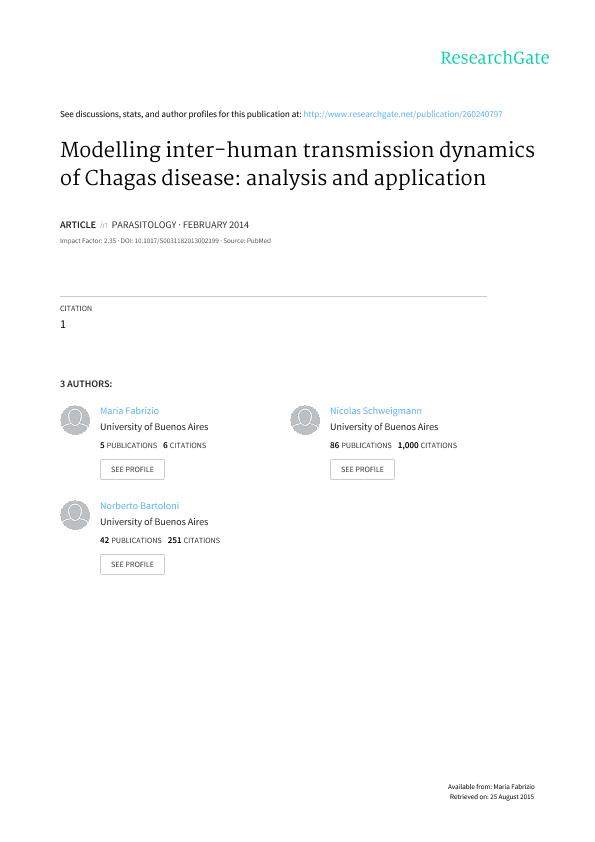Artículo
Modelling inter-human transmission dynamics of Chagas disease: analysis and application
Fecha de publicación:
05/2014
Editorial:
Cambridge University Press
Revista:
Parasitology
ISSN:
0031-1820
Idioma:
Inglés
Tipo de recurso:
Artículo publicado
Clasificación temática:
Resumen
Transmission of Trypanosoma cruzi, the causal agent of Chagas disease, has expanded from rural endemic to urban areas due to migration. This so-called urban Chagas is an emerging health problem in American, European, Australian and Japanese cities. We present a mathematical model to analyse the dynamics of urban Chagas to better understand its epidemiology. The model considers the three clinical stages of the disease and the main routes of inter-human transmission. To overcome the complexities of the infection dynamics, the next-generation matrix method was developed. We deduced expressions which allowed estimating the number of new infections generated by an infected individual through each transmission route at each disease stage, the basic reproduction number and the number of individuals at each disease stage at the outbreak of the infection. The analysis was applied to Buenos Aires city (Argentina). We estimated that 94% of the new infections are generated by individuals in the chronic indeterminate stage. When migration was not considered, the infection disappeared slowly and R0 = 0·079, whereas when migration was considered, the number of individuals in each stage of the infection tended to stabilize. The expressions can be used to estimate different numbers of infected individuals in any place where only inter-human transmission is possible.
Archivos asociados
Licencia
Identificadores
Colecciones
Articulos(IEGEBA)
Articulos de INSTITUTO DE ECOLOGIA, GENETICA Y EVOLUCION DE BS. AS
Articulos de INSTITUTO DE ECOLOGIA, GENETICA Y EVOLUCION DE BS. AS
Citación
Fabrizio, M. C.; Schweigmann, Nicolas Joaquin; Bartoloni, Norberto Jose; Modelling inter-human transmission dynamics of Chagas disease: analysis and application; Cambridge University Press; Parasitology; 141; 6; 5-2014; 837-848
Compartir
Altmétricas




